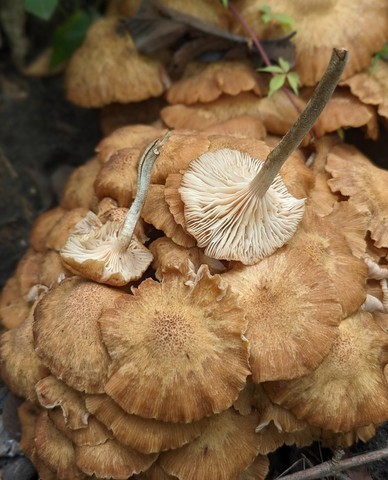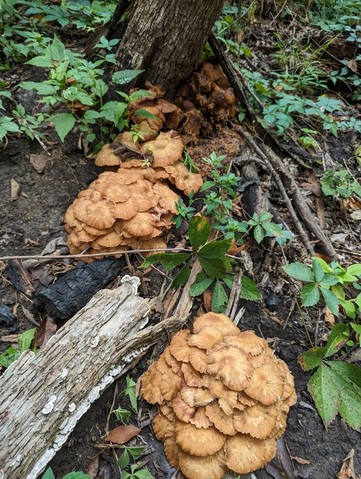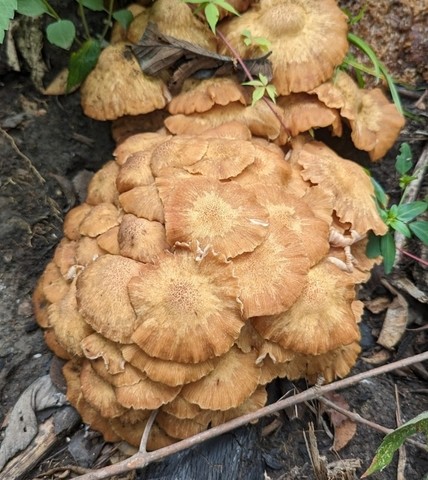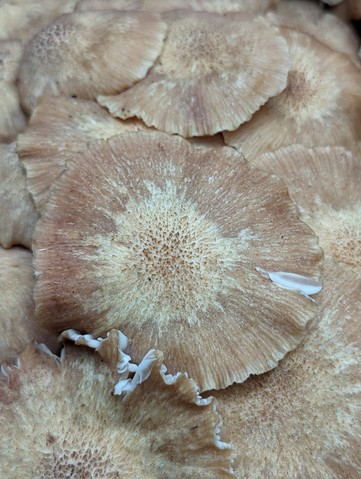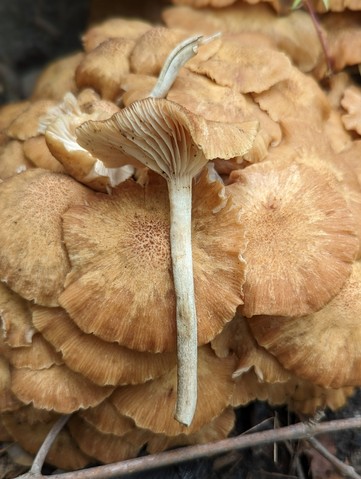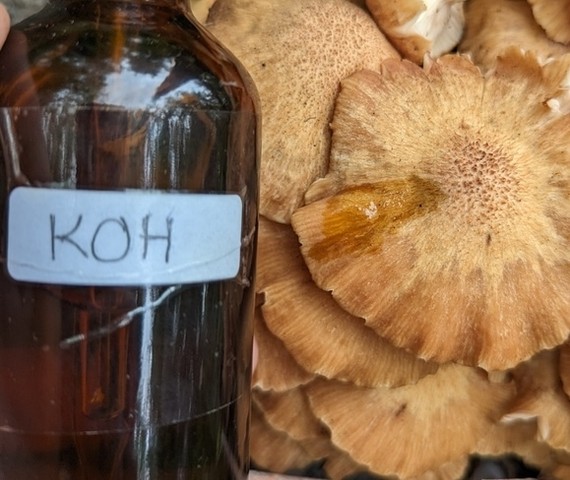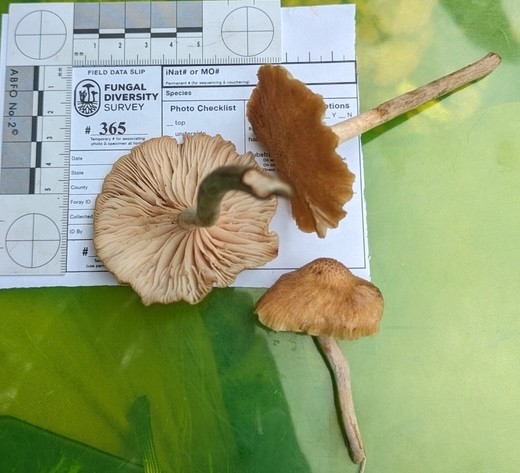Ringless Honey Mushroom
Desarmillaria caespitosa
Life > Fungi > Basidiomycota > Agaricomycotina > Agaricomycetes > Agaricomycetidae > Agaricales > Marasmiineae > Physalacriaceae > Desarmillaria
Description
The Ringless Honey Mushroom (Desarmillaria caespitosa) is a decomposer and tree parasite that can be found growing in large clusters from buried tree roots in late summer and fall. It may appear to be growing from the soil, but it is actually decomposing roots in the soil. It mostly grows from Oak (Quercus sp.) and Silver Maple (Acer saccharinum) and is distributed east of the Rocky Mountains in North America.
The cap color is a range of "honey"-like colors. The cap shape is evenly rounded, becoming flat, then pothole-shaped (depressed) or with a small bump (umbo) with age. The cap surface is ornamented with hair-like scales that are more abundant towards the center and rub off with age.
The gill color is whitish bruising pinkish. The gill attachment is running down the stem (decurrent) or attached with a small bit running down the stem (decurrent tooth). The stem shape is tapered at the base due to the clustering habit. The spore print is white.
September 11th, 2023 Field Notes - Indian Cave State Park
Growing tightly clustered at the base of dead American Hophornbeam tree on West-facing mixed oak/hickory woodland slope.
- Cap honey colored with dark orangish brown hairs towards the center, hygrophanous, and margins wavy and striated.
- Lamellae light tan, wavy, decurrent, with frequent partial gills.
- Stipe similar color to gills, fibrulose, slightly darkening where handled.
Additional Info
- Smell: not distinctive
- Taste: not distinctive
- KOH orangish on pileipellis.
References
Kuo, M. (2017, May). Armillaria tabescens. Retrieved from the MushroomExpert.Com Web site: http://www.mushroomexpert.com/armillaria_tabescens.html
Created December 15, 2025 at 10:41 AM
